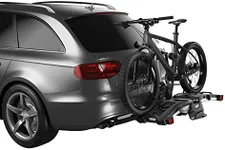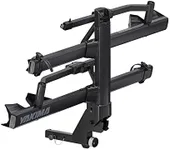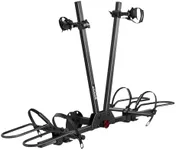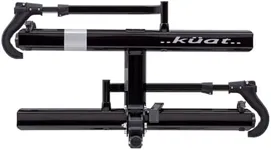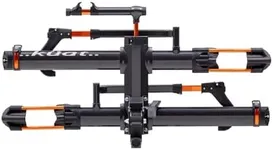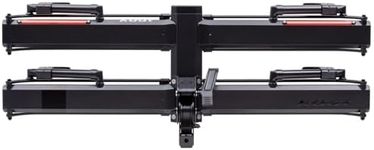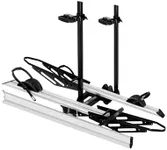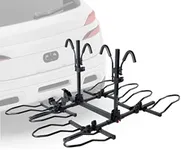Buying Guide for the Best Hitch Bike Racks For Two Bikes
Choosing the right hitch bike rack for two bikes can make your biking adventures more convenient and enjoyable. A hitch bike rack attaches to the hitch receiver on your vehicle, providing a secure and stable way to transport your bikes. When selecting a hitch bike rack, it's important to consider several key specifications to ensure it meets your needs and preferences. Here are the key specs to look at and how to navigate them.Hitch Receiver SizeThe hitch receiver size is the dimension of the opening on your vehicle's hitch where the bike rack will be attached. Common sizes are 1.25 inches and 2 inches. It's important because the bike rack must match the size of your vehicle's hitch receiver to ensure a secure fit. If you have a smaller vehicle, you might have a 1.25-inch receiver, while larger vehicles often have a 2-inch receiver. Check your vehicle's hitch size before purchasing a rack to ensure compatibility.
Bike CapacityBike capacity refers to the number of bikes a rack can hold. Since you are looking for a rack for two bikes, ensure the rack you choose is designed to carry at least two bikes. Some racks can be expanded to hold more bikes with additional attachments, which can be useful if you plan to transport more bikes in the future. Make sure the rack can securely hold the weight and size of your bikes.
Weight CapacityWeight capacity is the maximum weight the bike rack can support. This is important because bikes vary in weight, and you need to ensure the rack can handle the combined weight of your two bikes. Lightweight racks may support up to 60 pounds, while heavy-duty racks can support over 100 pounds. Consider the weight of your bikes and choose a rack that can safely carry them without exceeding the weight limit.
Rack TypeThere are two main types of hitch bike racks: platform (tray-style) and hanging (mast-style). Platform racks hold bikes by their wheels, providing a stable and secure fit, which is ideal for heavier bikes or those with unique frame shapes. Hanging racks support bikes by their frames, which can be lighter and more compact but may not be suitable for all bike types. Choose a rack type based on the design and weight of your bikes, as well as your preference for ease of loading and unloading.
Security FeaturesSecurity features include locks and anti-theft mechanisms that protect your bikes and the rack itself from theft. Some racks come with integrated locks for the bikes and the hitch, while others may require you to purchase locks separately. Consider how often you will leave your bikes unattended and choose a rack with adequate security features to give you peace of mind.
Ease of UseEase of use refers to how simple it is to install, load, and unload the bike rack. Look for features like tool-free installation, tilting mechanisms for trunk access, and adjustable arms or trays that make it easier to secure your bikes. If you frequently use the rack, these features can save you time and effort. Consider your physical strength and how often you will need to remove or adjust the rack when choosing a model.
Durability and Build QualityDurability and build quality are important for ensuring the longevity and reliability of the bike rack. Look for racks made from high-quality materials like steel or aluminum, which can withstand the elements and regular use. Check for features like rust-resistant coatings and sturdy construction. A well-built rack will provide better performance and safety over time, making it a worthwhile investment.
